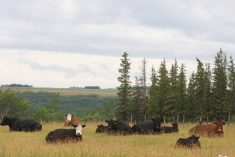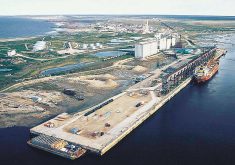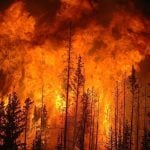This past Saturday was Earth Day, a worldwide celebration of environmental protection, observed since 1970.
Across the world people gathered for events, though a cursory scan of the activities through news reports suggests that most were in very urban locations such as Toronto and Vancouver.
This is the great irony of the modern environmental movement. Frequently the most ardent campaigners for preservation of the natural environment have little day-to-day interaction with it.
But the truth is these citizens have strong beliefs and often they do good work in service of their cause. In downtown Winnipeg, for example, volunteers braved blustery weather and cleaned city streets of the accumulated trash of the winter season.
Read Also

Roundup retraction makes public trust ripples
A foundational study on glyphosate safety was recently retracted, while Roundup maker Bayer has already said it may ditch the key agricultural herbicide after lawsuits piled up.
However, it’s also fair to say that they don’t always have the clearest picture of what it takes to manage a farm or ranch. That’s not to fault them; after all they’re not in the business. But some of their desires for environmental improvements will in all likelihood come to affect how you can farm.
Out in rural Western Canada, however, it’s a far different picture. There the miles roll on, and rural farmyards can, at times, be a bit too ‘natural.’ On many farms that’s frequently deer visiting the garden, but occasionally it can be something more alarming like a bear that’s come down out of the hills.
It can be difficult to understand just how far apart these two worlds can be. I occasionally will meet an earnest back-to-the-lander at a social gathering, excited about the joys of moving “off the grid.” I always mentally compare that with the reality of chopping wood, pumping water for the dugout and dealing with finicky sewage pumps or clearing snow.
Those who have lived it would wonder: “Why in the world would you want to be off the grid? Grids are so convenient.”
The less sentimental ideals however, aren’t so easily dismissed. Take the question of human population and the resulting environmental footprint.
Earth is a crowded place these days. An estimated 7.5 billion people now call it home, a number that grows by the second. To put that into perspective, in 1980 ‘just’ 4.5 billion people inhabited the Earth. By 2050 total population is forecast by the United Nations to reach 9.7 billion.
Numbers like that will bring almost unbelievable environmental pressure on our fragile planet.
We’re more than a little protected from that here in Manitoba, and throughout much of Western Canada.
In 1976, there were just over one million inhabitants of Manitoba. In the mid-1990s I recall headlines in the Winnipeg Free Press fretting the population may have fallen below a million due to emigration.
Even today, after a couple of decades of solid economic growth, the province is still only home to 1.2 million, and more than half that number lives in and immediately around the capital.
This relatively sparse rural population makes it easy to forget that what we see isn’t the whole picture.
A nighttime image of Earth helps put this in perspective, showing a web of light throughout much of the developed world. The east and west coasts of North America are ablaze, and the major urban centres of Central Canada and the Eastern U.S. make much of the map light. Europe is similarly lit, as is the Indian subcontinent and much of heavily populated Asia. Africa is an anomaly, teeming with people but much of it lacking the telltale signs of development illuminated by artificial light. Most of the interior of Eurasia and vast swaths of Latin America all remain dark.
In Western Canada, a handful of urban centres stand out, but much of the map remains shrouded in darkness. Even more strikingly, just to the north, the web of light stops. It becomes clear that, in the analogy of ‘the grid,’ all who live in this region are on the very edge of it.
That can make it difficult to understand the alarm environmentalists feel. And they likely find what can be perceived as our lack of support probably at least as perplexing.
There is a photo, taken just a couple of years after the original Earth Day celebrations, by the crew of the Apollo 17 spacecraft. It’s the first photo ever taken that shows the entire Earth, floating in space, and is known as “the blue marble.”
It is said this photograph has made more environmentalists than any awareness campaign ever has. It perfectly encapsulates the reality that from the fog of antiquity to the modern day, our history has played out on one fragile rock, floating through space.
It underscores the way we’re all bound into this struggle together, a struggle that includes both the necessity of feeding ourselves and protecting the very environment that sustains us.
After all, if we don’t get both of these challenges right, we’ll all suffer together for it.















